
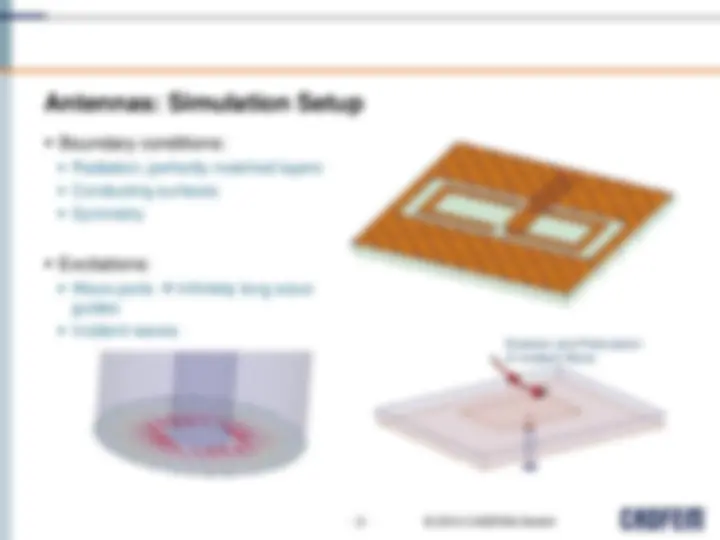
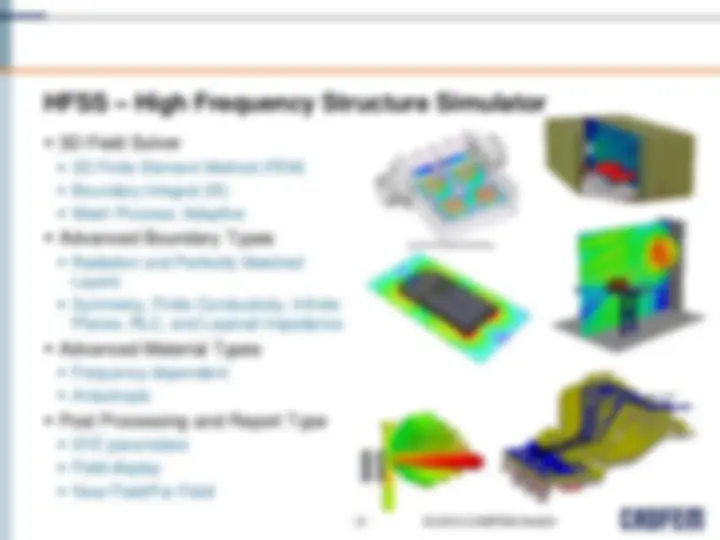
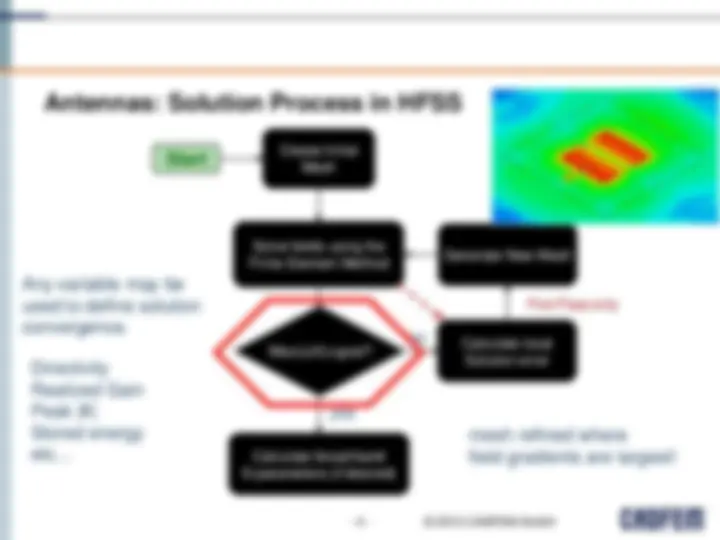
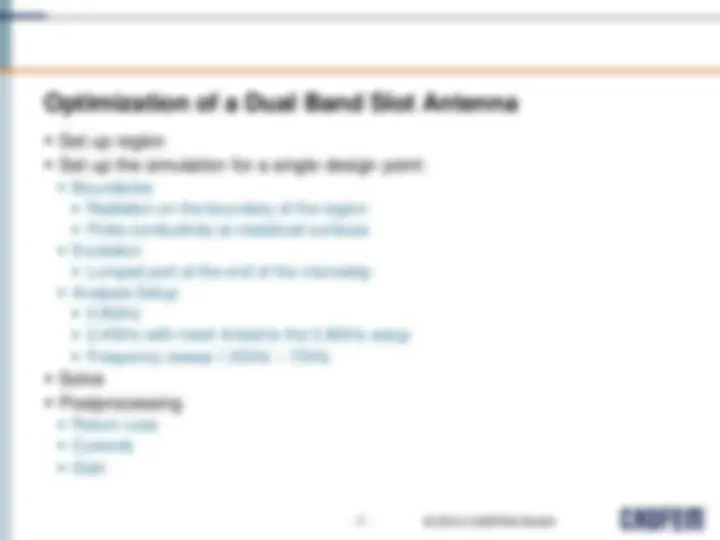
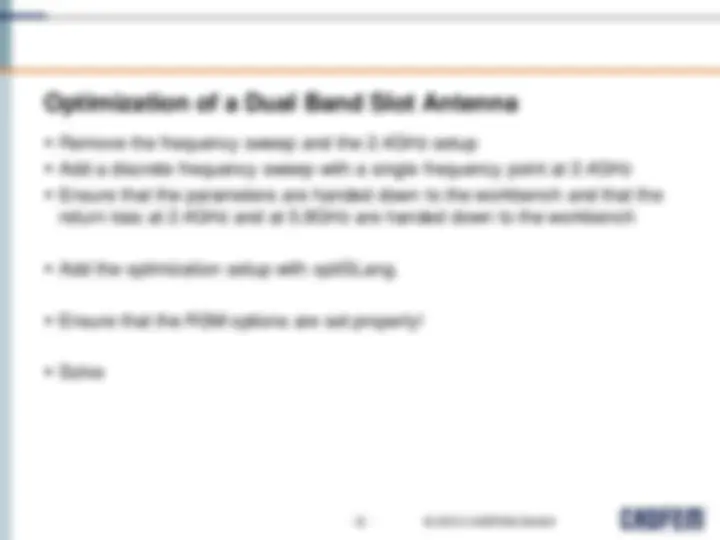
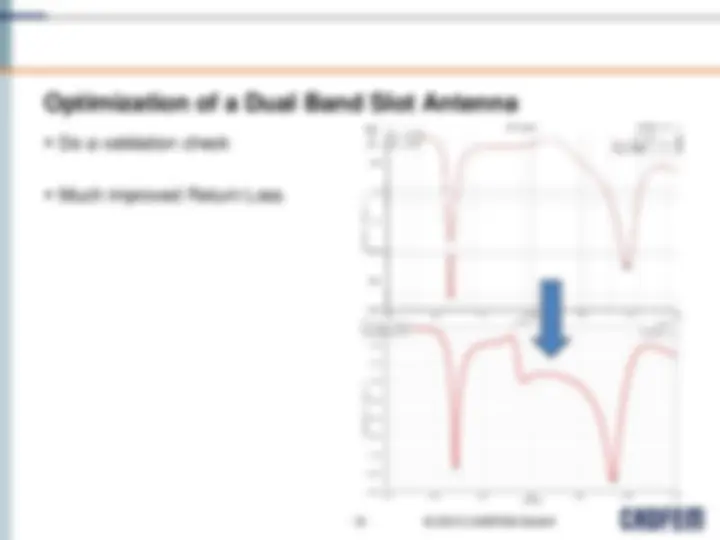


Study with the several resources on Docsity

Earn points by helping other students or get them with a premium plan


Prepare for your exams
Study with the several resources on Docsity

Earn points to download
Earn points by helping other students or get them with a premium plan
Community
Ask the community for help and clear up your study doubts
Discover the best universities in your country according to Docsity users
Free resources
Download our free guides on studying techniques, anxiety management strategies, and thesis advice from Docsity tutors
Information on the optimization of a dual band slot antenna using ansys high frequency structure simulator (hfss) and optislang. The challenges in antenna design, simulation setup, and solution process in hfss. It also includes details on optimizing the antenna design to minimize return loss at both frequencies. From the prace autumn school 2013 held at the university of ljubljana.
Typology: Exercises
1 / 11

This page cannot be seen from the preview
Don't miss anything!







© 2013 CADFEM GmbH
Antenna Simulation
Minimize return loss Radiation pattern: Main lobe, side lobes Polarization Band width Several bands Impedance matching: Smooth transition from 50Ω to 377Ω
Validate that antenna design meets requirements. Gain understanding of the design. Optimize the design.
© 2013 CADFEM GmbH
HFSS – High Frequency Structure Simulator
3D Finite Element Method (FEM) Boundary Integral (IE) Mesh Process: Adaptive
Radiation and Perfectly Matched Layers Symmetry, Finite Conductivity, Infinite Planes, RLC, and Layered Impedance
Frequency dependent Anisotropic
SYZ parameters Field display Near Field/Far Field
Antennas: Solution Process in HFSS
Create Initial Mesh
Solve fields using the Finite Element Method
Max(|DS|)<goal? Calculate local Solution error
Generate New Mesh
Calculate broad band S-parameters (if desired)
no
yes
First Pass only
Max(|DX|)<goal?
Optimization of a Dual Band Slot Antenna
Optimization of a Dual Band Slot Antenna
Boundaries Radiation on the boundary of the region Finite conductivity at metalized surfaces Excitation Lumped port at the end of the microstrip Analysis Setup 5.8GHz 2.4GHz with mesh linked to the 5.8GHz setup Frequency sweep 1.5GHz – 7GHz
Return Loss Currents Gain
© 2013 CADFEM GmbH
Optimization of a Dual Band Slot Antenna
-22.501.00 2.00 3.00 (^) Freq [GHz]4.00 5.00 6.00 7.
-20.
-17.
-15.
-12.
-10.
-7.
-5.
-2.
dB(St(Feed_T1,Feed_T1))
XY Plot 1^ HFSSDesign
m m
Name m1 m2 (^) 2.43005.6900X (^) -19.3580-21.1131Y Setup1 : Sw eep dB(St(Feed_T1,Feed_T1)) Curve Info
Optimization of a Dual Band Slot Antenna